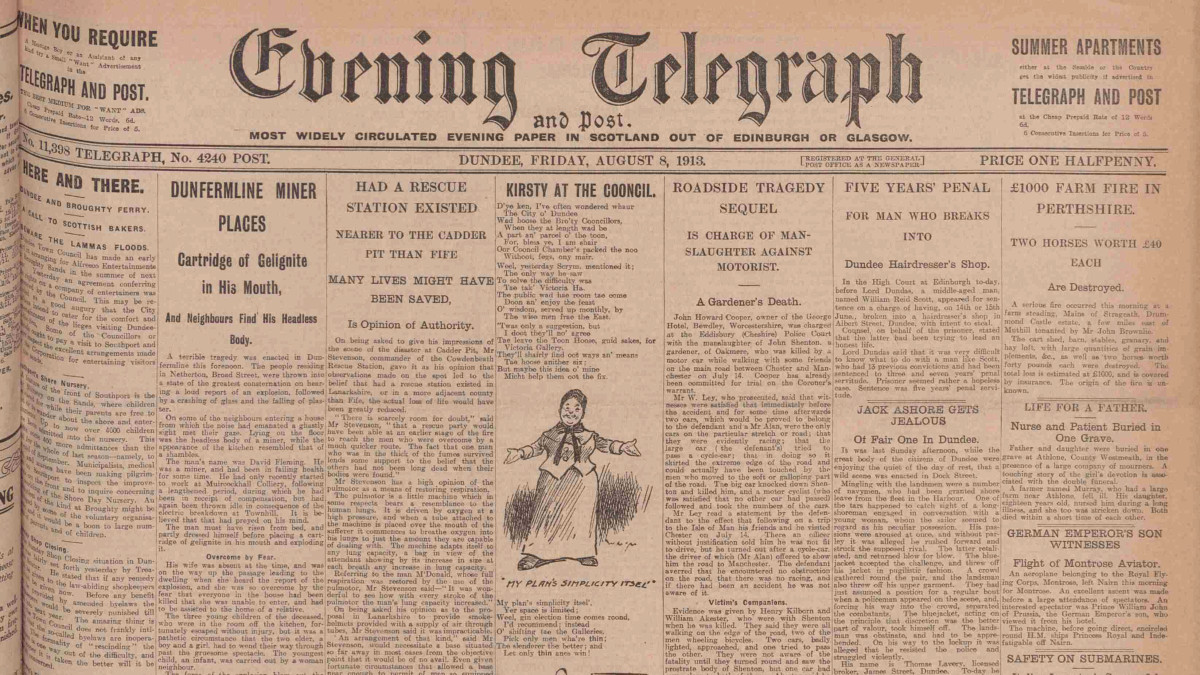143-Year-Old First Edition of the Evening Telegraph Restored Using Modern Paper Conservation Techniques
The Evening Telegraph was first published on March 1, 1877 – over 143 years ago. Emma Fraser is a bookbinder and conservator who is professionally accredited by the Institute of Conservation, and she carried out a careful repair on this historic first edition newspaper. The restoration and conservation of the debut edition of the evening newspaper comes as part of the DC Thomson archive team’s ongoing efforts to preserve the long history held in their archives.
Fraser has worked in the field for more than 20 years, and details her process for us online, beginning with removing it from its archive volume and treating it to a water bath:
“When I got the first edition of the paper it was already bound and was in quite bad shape as it was the first paper in the volume. It was quite what we call ‘cockled’, which basically means creased and folded. I removed the paper fully from the volume and then the process wasn’t actually as bad as a lot of the projects I have worked on. A lot of these objects can be very acidic. Unfortunately, it is just an inherent problem in the paper from an element called lignin that comes from wood. Over time, it gradually starts to break down and can become very yellow and very brittle. The first edition of the Evening Tele wasn’t actually that acidic though, the damage was really what we call mechanical damage so it was physical damage to the paper instead of chemical damage.”
Physical damage can happen over the years through handling resulting in minor rips and tears. David Powell, DC Thomson archive manager, said: “Titles like the Evening Telegraph were printed onto newsprint – an acidic and flimsy type of paper. The papers were designed to be read and disposed of rather than kept for ever and a day. As time marches on nature takes its course and the paper starts to naturally degrade.”
The work of specialist paper conversation professionals like Emma Fraser is vital to preserving fragile items like these. An array of products such as wheat starch paste and Japanese tissue are used during the conservation process as well as mending tears, removing surface dirt, and de-acidifying the paper to slow down the rate of decay.
Find Out More
- The Evening Telegraph article: https://www.eveningtelegraph.co.uk/fp/historic-143-year-old-first-edition-of-the-evening-telegraph-restored-to-former-glory-using-conservation-techniques/
- The Book & Paper Studio: https://www.facebook.com/bookandpaperstudio/
Please Support us on Patreon!

Moreover, starting with the pledge level of $3, you will get a digitized vintage book about bookbinding, book history, or book arts each month from us!
These pledges help iBookBinding to continue its work and bring more information about bookbinding and book arts to you!


